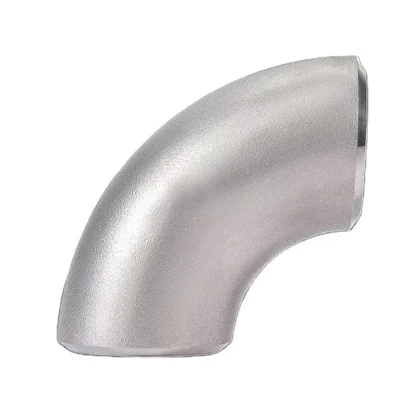Stainless Steel Elbow Processing Comparison: Which Method Is Best For You?
Stainless steel elbow are essential connectors in piping systems. They are widely used in industries such as petroleum, chemical, power generation, and construction, particularly in environments requiring high corrosion resistance and strength. The manufacturing process for stainless steel elbows directly impacts their quality and performance, making the selection of the appropriate production method crucial. This article will delve into the manufacturing process of stainless steel 90 degree elbow to help companies improve efficiency and quality in production.
Understanding the Main Components
Steel elbows are made of stainless steel, which offers excellent corrosion resistance and high-temperature resistance. Common types include 45-degree elbows, 90-degree elbows, and 180-degree elbows. The elbow manufacturing process involves various techniques, such as pipe cutting, thermoforming, and welding. The material and process used for stainless steel elbows vary depending on the application environment.
Currently Popular Manufacturing Processes for Stainless Steel Elbows
1. Thermoforming: The thermoforming process involves heating stainless steel pipe at high temperatures and bending it using a die. This process is suitable for producing large-diameter pipe elbows, ensuring smooth internal and external surfaces and reducing stress concentration caused by bending. For example, a chemical plant adopted hot forming technology in 2024 to produce large stainless steel elbows to ensure efficient operation in harsh environments.
2. Welding: Welding is another common process for manufacturing stainless steel elbow fitting, particularly for connecting two pipe sections. Welding is often used to produce elbows requiring specific angles and dimensions. Its advantage lies in its ability to produce elbows of varying shapes and sizes to accommodate complex piping systems. Welded elbows are widely used in many oil and gas industries.
3. Stamping: Stamping uses a press to form stainless steel sheets. This method is suitable for producing small-diameter stainless steel elbows. This process offers the advantages of high efficiency, material savings, and high strength. In early 2024, an aerospace company adopted stamping to produce stainless steel elbows for satellite transmission pipelines, achieving significant results.
How to Choose a Stainless Steel Elbow Manufacturing Process
The appropriate manufacturing process should be determined based on the specific project requirements, elbow size, and intended use environment. For example, hot forming and welding are more suitable for elbows in high-pressure environments; stamping is more economical and practical for smaller diameters and low-pressure applications. Quality control is also crucial when selecting a manufacturing process. Ensure that every step in the production process meets standard requirements to avoid quality issues caused by improper workmanship.
Industry Applications
Steel tubing elbows have a wide range of applications and play a vital role in industries such as chemical, petroleum, natural gas, power generation, and construction. In the petrochemical industry, elbows connect complex piping systems to ensure smooth fluid flow. In the power industry, 3 stainless steel 90 degree elbow are also commonly used in heat exchanger piping systems. Elbow quality is particularly important in high-temperature and high-pressure operating environments.
Why Understanding This Matters to Your Business
For companies engaged in pipeline construction and maintenance, understanding the manufacturing process for stainless steel elbows suppliers can help them select the most appropriate production method, improve production efficiency, and ensure product quality. By selecting the right process, companies can enhance their product competitiveness and reduce production costs. Furthermore, choosing the right manufacturing process can avoid repairs and replacements due to quality issues during use, thereby reducing operational risks. Mastering this will ensure a successful industry presence.
By gaining a deep understanding of the stainless steel 90 degree elbow manufacturing process, companies can effectively improve product quality and gain an advantage in the fiercely competitive market. This is not only necessary to increase production capacity but also crucial to ensuring customer satisfaction and long-term product stability.
